The Japanese sword "Hanzo sword" of "Kill · Bill" was overwhelmed by the swordsmen who abroad

Quentin Tarantino's movie "Kill · Building"Japanese sword made by Hattori Hanzo"Han Sol SwordA movie that the swordsmith reproduces in realism with power together is released on YouTube. I made the Hanzo sword,Kirakiru's "One Tatami Scissors"The swordsmith team who reproduces and creates many weapons that come out in manga and animationMAN AT ARMS"is.
Hattori Hanzo Katana (Kill Bill) - MAN AT ARMS: REFORGED - YouTube
The film "Kill · Bill" is a story that the main character and a former killer Beatrix · Kidoo was brought up in the building, the boss of the organization that belonged to, and the Japanese sword is brought in and challenged for revenge.

Slash the opposing enemies with grasshopper grasshopper.

Beatrix's Japanese sword was made by Swordlessness and Hattori Hanzo who retired in Okinawa, and there are sculptures of Shisa near the handle of the sword.

A scene where Hattori Hanzo anticipates the arm of Beatrix and hanso sword is given. In the movie, the sword's production landscape was cut.
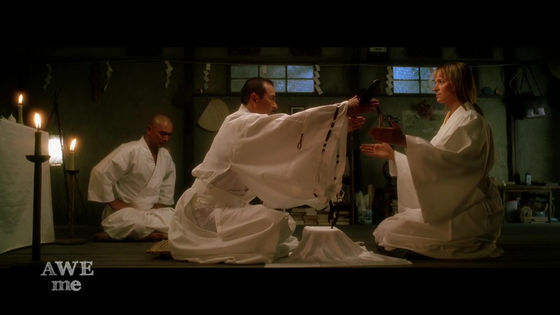
This time it is challenging to make "Hanzo Sword" with Mr. Swatsworth Matt Stagmer ......
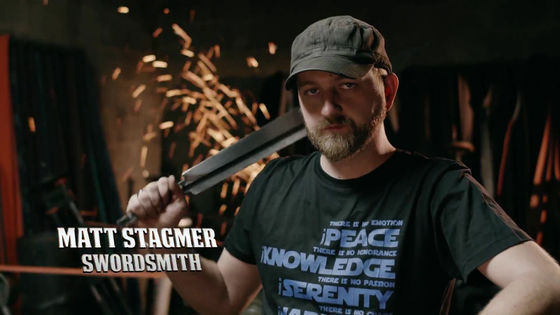
Kerry Stagmer brothers who are also swordsmith and mechanical engineers.

And the members of MAN AT ARMS team support Hanzo sword making.
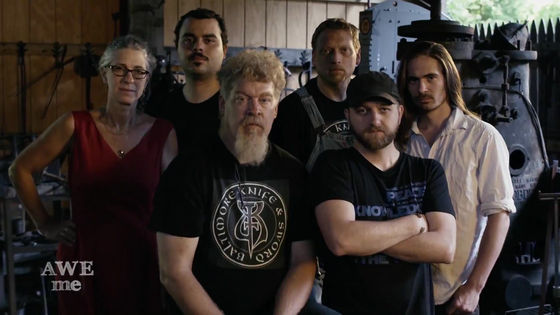
First of allTataraI will change the iron into steel (chopsticks).
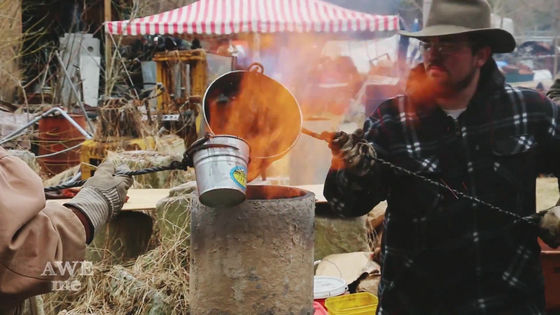
It is said that just 600 pounds (27 kg) of coal is necessary for this work alone.
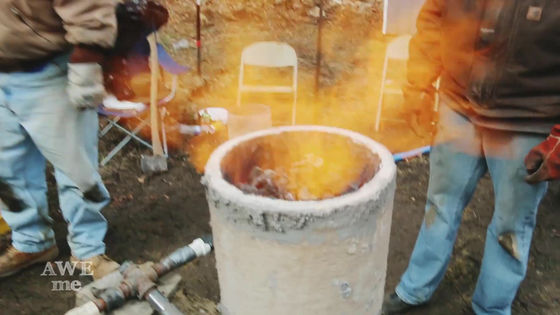
We will proceed manually while fine-tuning the fire power.

This reddish brown powder is "LimoniteIt is a type of iron ore. It was excavated from the stratum about 3500 years ago.
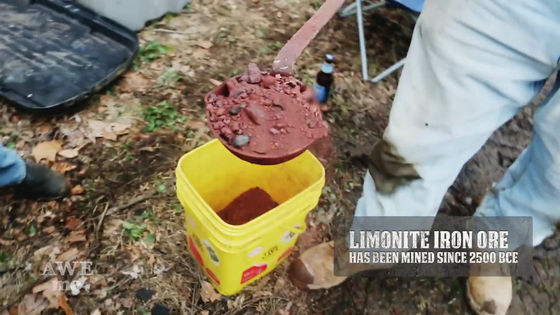
I am fixing mud around the tatara.
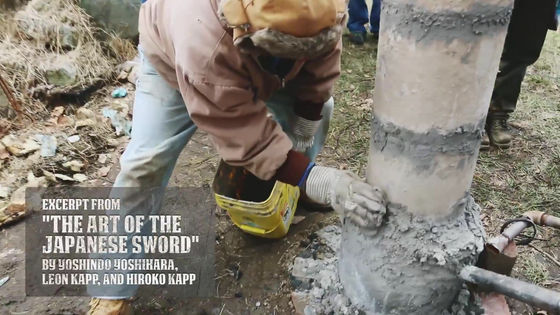
When the iron that becomes the material is heated enough, you drill a hole in the tatara.

Then, like the lava, steel melted in the muddy flowed out.
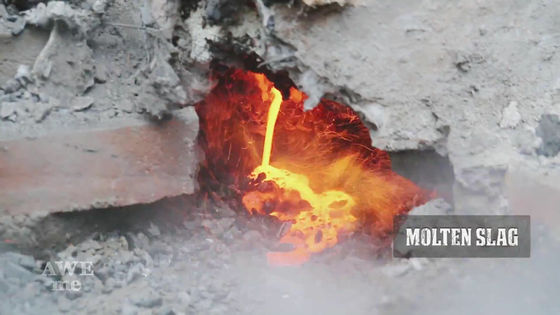
From that, "A pieceI will take out the rough steel chunks called.
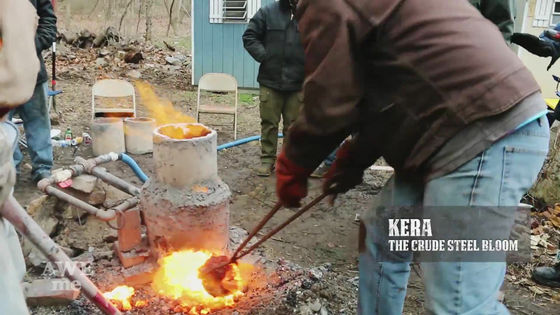
I will hit the tenton with a hammer with the 'fragments' that are lit by fire with three people.
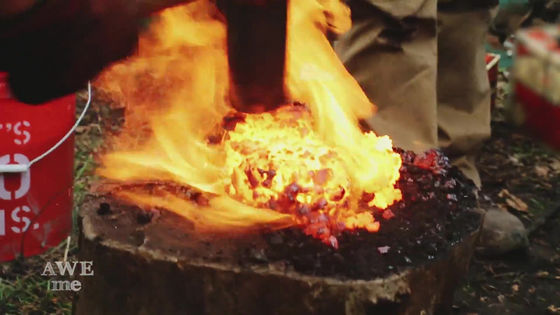
Remove the part of the nucleus from the center of the scratch and grasp it with a fire clippers.
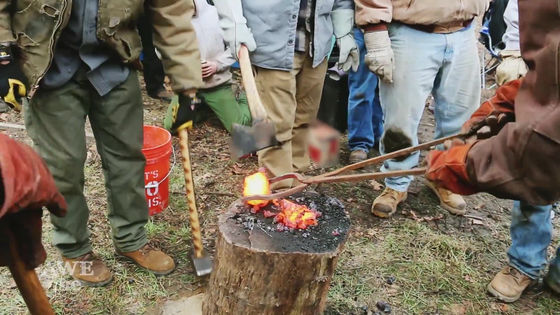
Move to the processing place with a dash as it is.
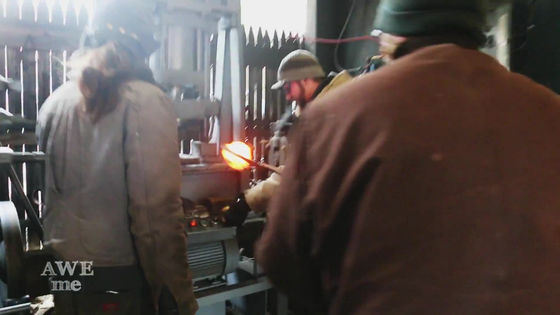
Crush the steel into a pettanko with a hydraulic press machine.
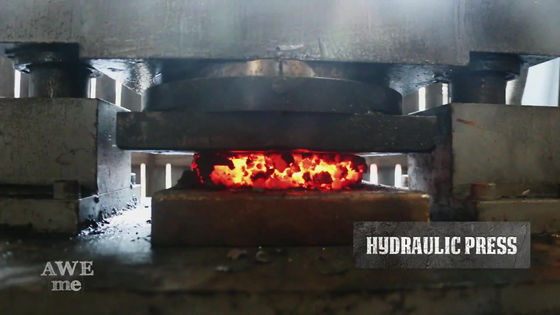
The following catastrophe is completed. We will divide this into a number of parts and will make Japanese swords.
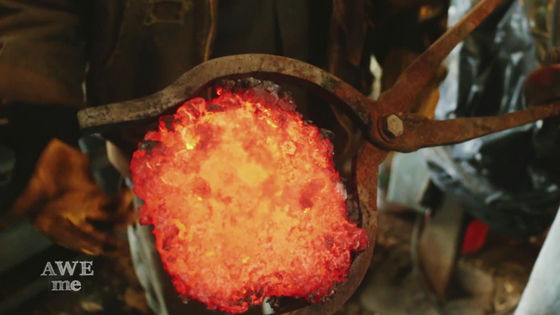
Next, forging work of the sword. With a dedicated hammer ......
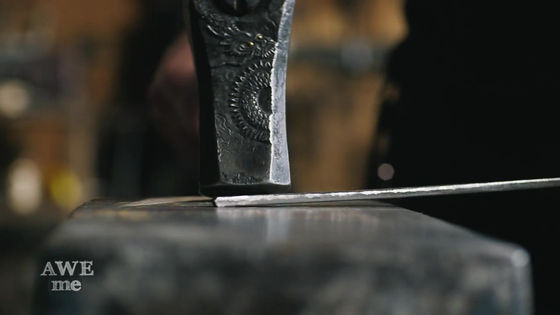
I will hit a thin iron stick until it gets red.
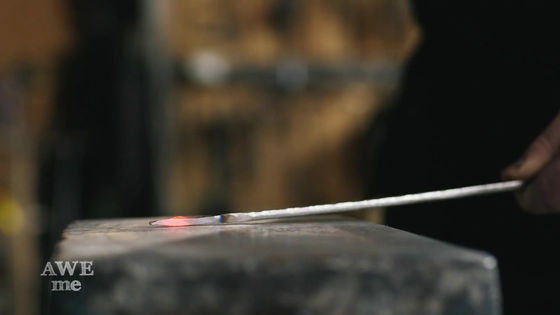
Ignite the torch with a stick of red.
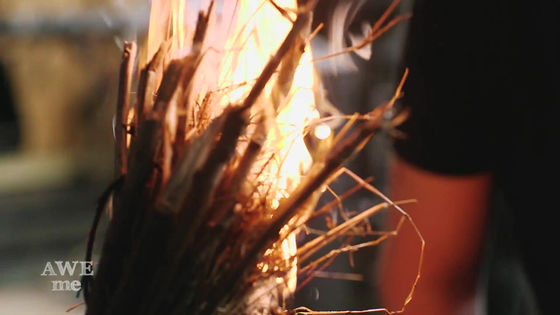
Place the torch together with the torch and put coal from the top.

nextBall steelWork of "training" to raise the strength of. The black cattle reflected in the center is ball steel.
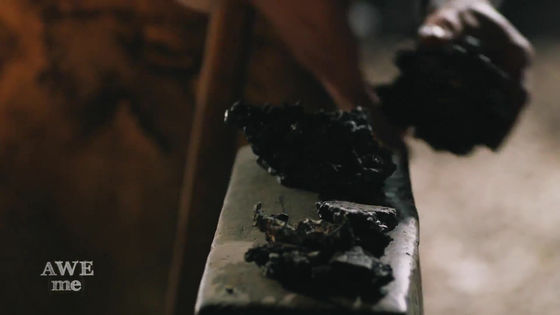
I sandwich the ball steel with a fire clip and heat it in the furnace.
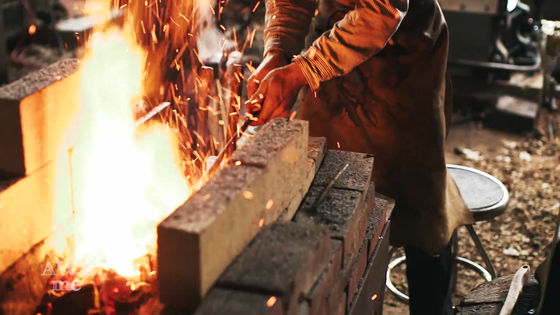
By striking the heated ball steel, we remove the impurities inside and refine the ball steel with higher purity.
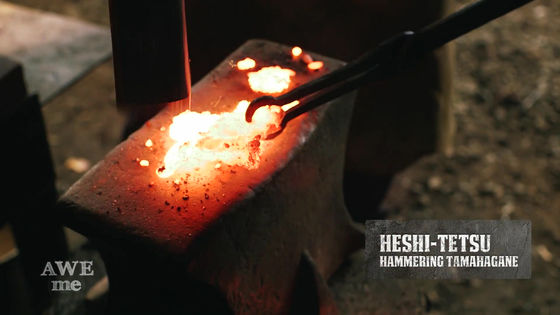
High purity ball steel is a valuable thing that can only take a small amount out of a large amount of material, so I will keep a small piece of cabbage as important.
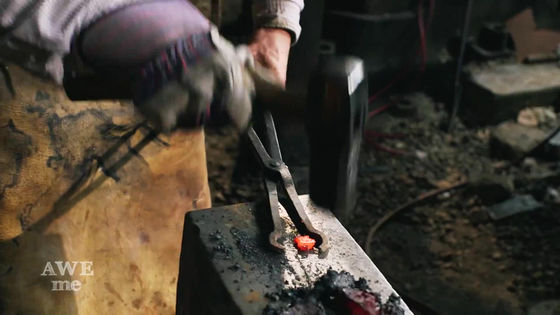
Once the ball steel is sufficiently thinned ... ...
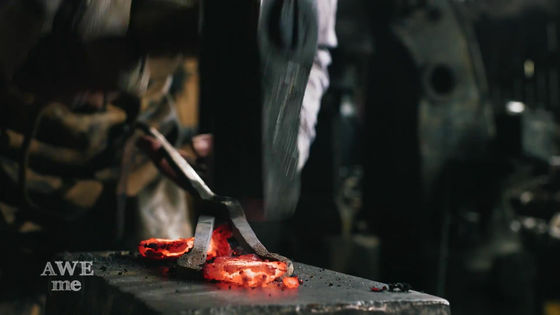
Perform quenching work to quench in water.
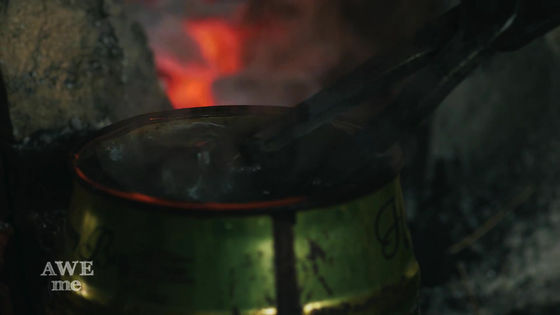
By performing quenching, the portion containing much carbon will crumble and only the tough portion will remain.

Subsequently, work of "small dividing" in which the ball steel is crushed small with a hammer.
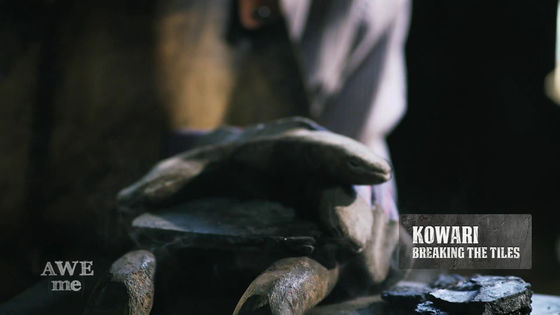
When looking at the cross section, we use "hardwood" as the surface of the sword with the portion with the high carbon content as the surface of the sword, and the soft part with the small amount of carbon as "core iron (shinkane)" which is the center of the sword .
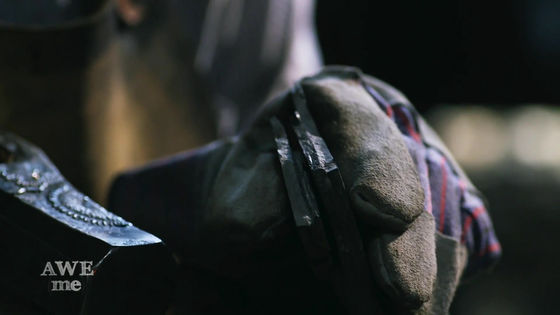
"Piled boiled" refining a sturdier catch by stacking several pieces of leather.
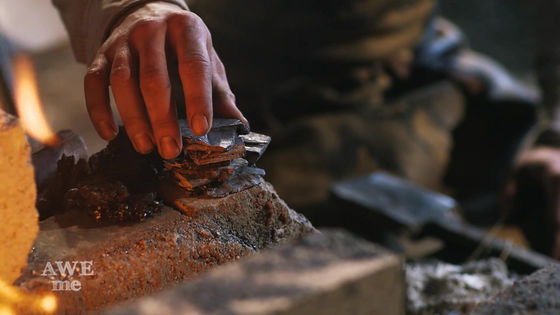
Stacked leather on the teco stand ... ...

Wrap with wet wet paper.
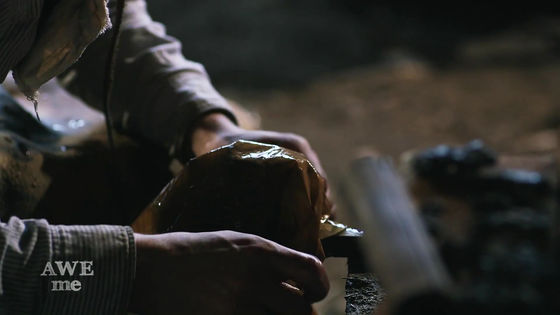
I will put mud from the top of Japanese paper.
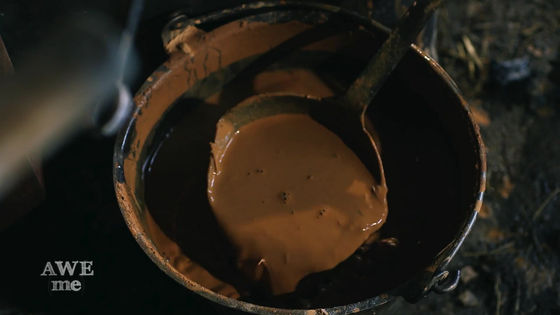
The mud has a role to transmit heat to the core of the iron.
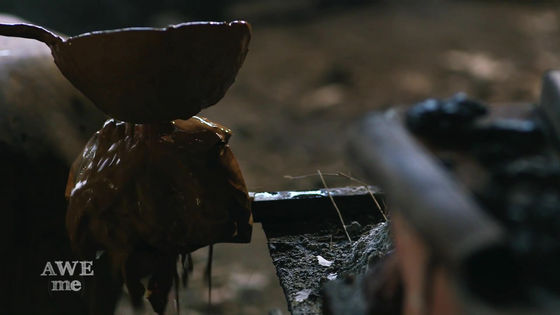
Add further cotton and ash to block oxygen.

I will heat the scrap iron while looking at the appearance of sparks in a furnace.
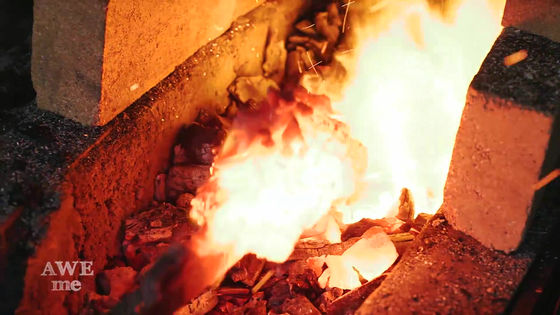
Remove it from the furnace and flatten the leather iron with a flat hammer with a large area.
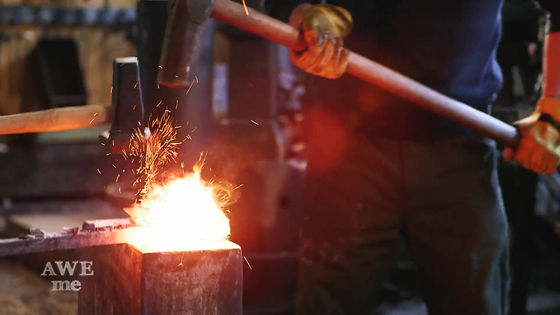
Cover the straw with ash and put it in the furnace ......
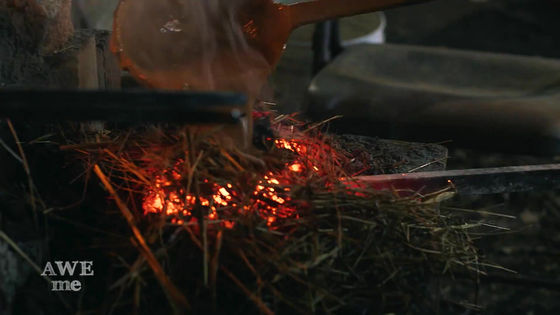
I repeat the task of hitting the steel and training.
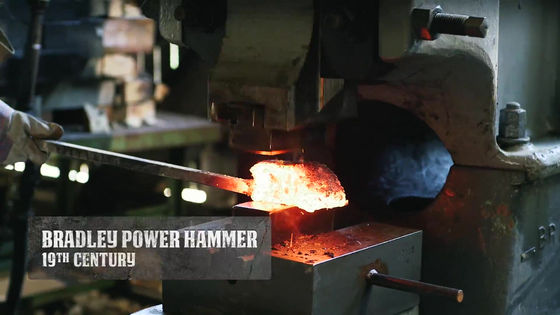
If the steel has expanded to a certain size, we will do "refit training". Put the glasses in the center of the steel ......
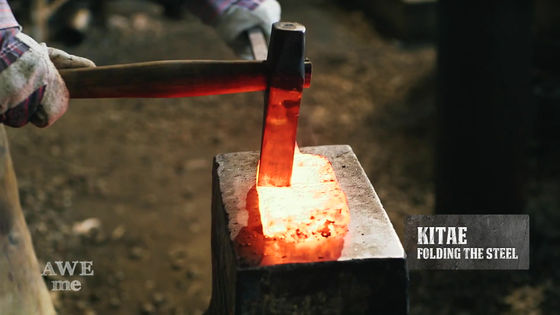
I will put a crease in half.

When folded back and sticking up and down ......
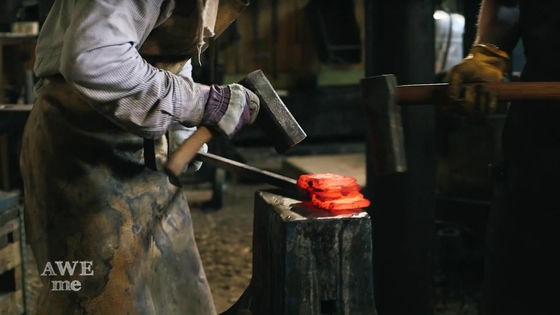
Cover the ash and put it in the furnace again.
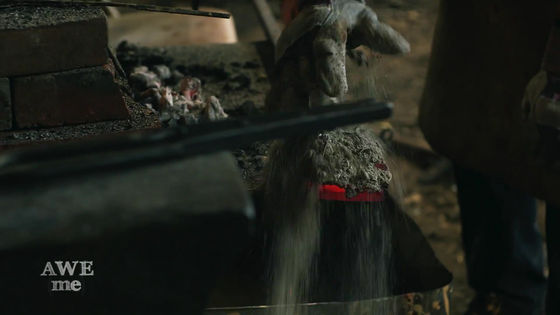
Next turn it by 90 degrees, put a crease, and turn it back in half of the length. It is said that the purity of steel will increase as a result of doing "return training" many times.
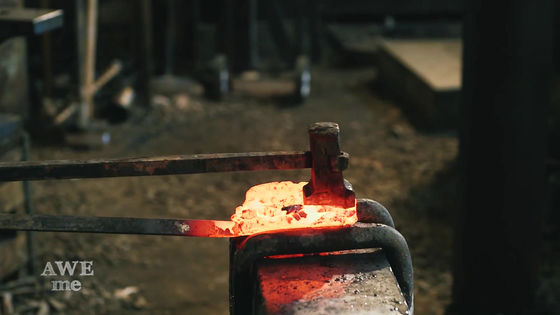
Sparks are scattered intensely in the work of stretching the steel before turning back.
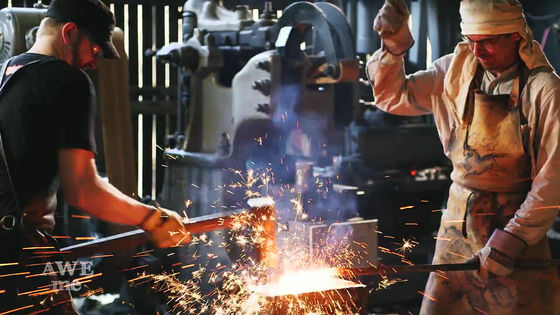
The process of making the core iron which is the center of the sword consists of stacking small steel as well as iron making.
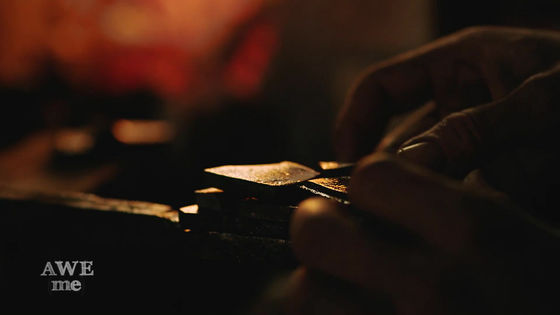
Wrapped in Japanese paper, put a mud juice with a straw.

The process of refining the core warmed by the furnace in half and purifying it is the same as in the case of iron.
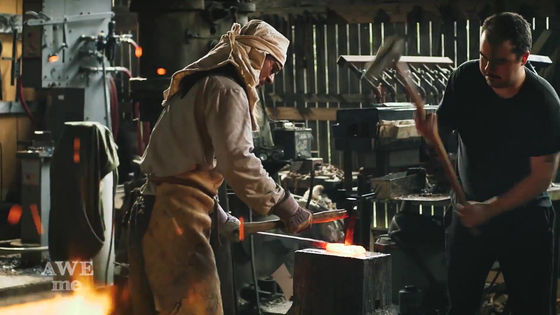
Core iron has less carbon content than leather and contains a lot of iron, so when you work to stretch it sparks scatter a lot.
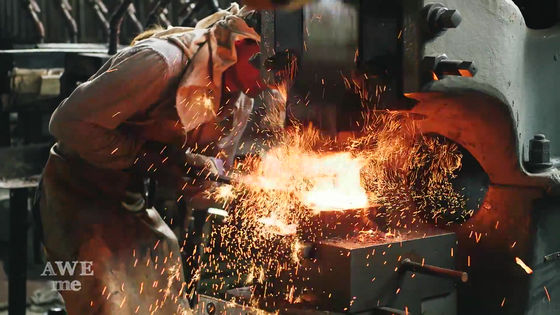
Sparkling sparks are as beautiful as sparkling fireworks.
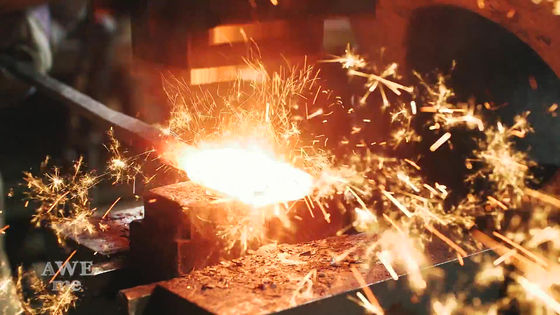
I am working with spinach so that sparks will not fly towards swordsmith.
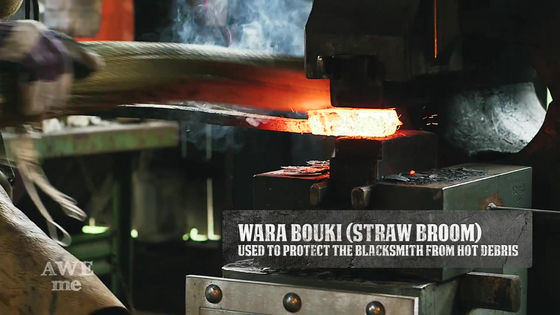
Subsequently, work of "build-in" that combines core and leather iron. Dent the center of the iron first ... ...
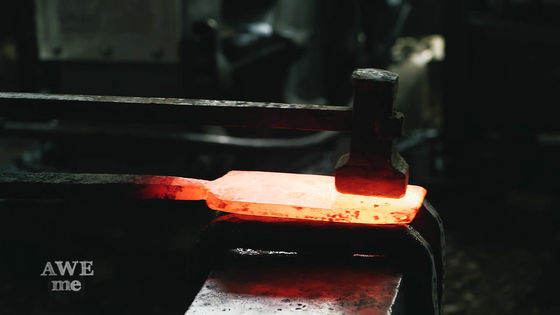
I will bend it in a U shape.
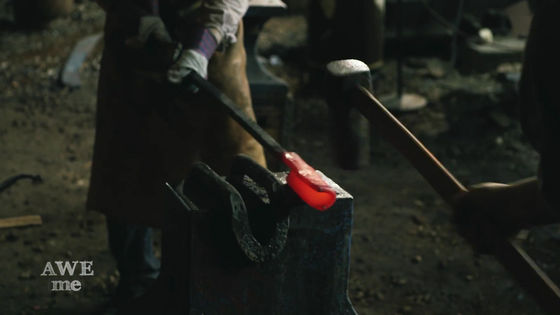
White as a flux on the surfaceBoraxCover the powder and put the thinly stretched core iron in the gap between the scrap iron.

After heating in the furnace, we will stretch it while pinching the bare burdock.
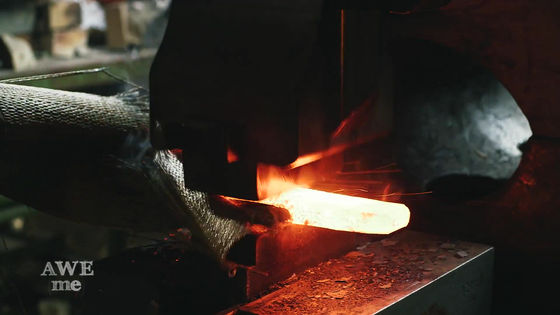
The state in which the core and the scrap iron adhered cleanly. By turning back many times, there are 3 million iron layers in the interior.

"Cutting the tip" to cut off the tip part obliquely.
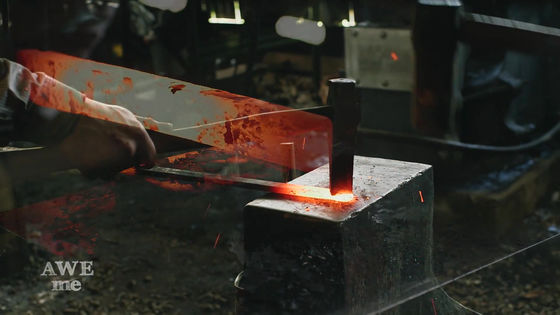
When the temperature goes down, it approaches a look that looks like a Japanese sword considerably.
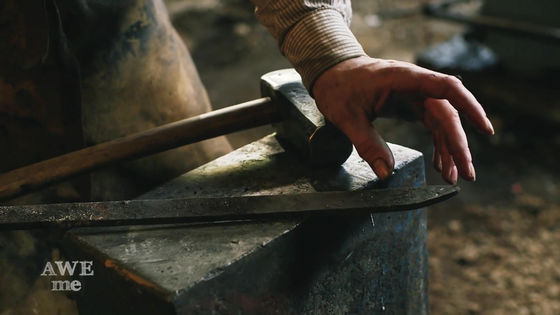
The next step is to hit the sword from the side of the ridge and the side of the Horoji (Shinobi Stripe) side, to float the line of "Ho", the process of "fire making".
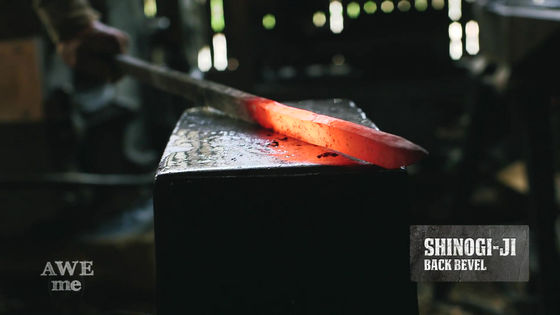
Where the sword is stretched thinly and the ho is visible in the center.
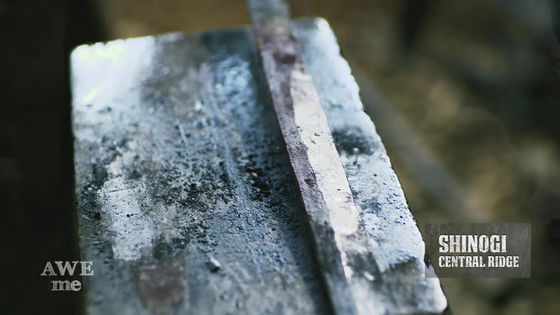
It is the work of "quenching" that finally fuses the "blade" part of the Japanese sword to the blade. Place the steel from which the blade is based on the blade, heat it and hit with a hammer.
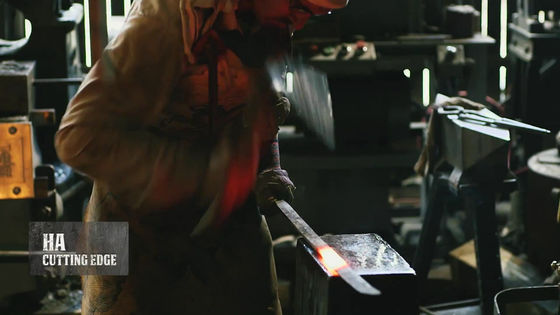
The state where the blade and the blade are stuck together is such a feeling, and the part of the blade is fused neatly with the blade.

By performing quenching, "warping" unique to Japanese sword is born.
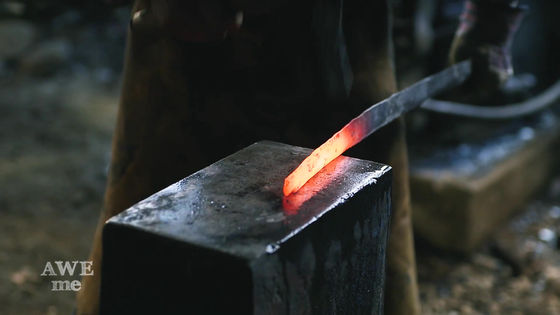
Brush up the shape of the blade by brushing it.
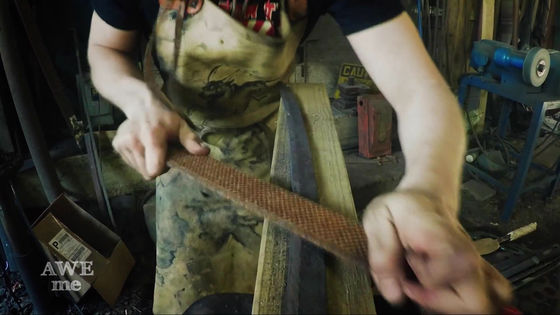
Apply thick grinding soil (thick Yachi Tachi) thick to the part other than the blade, while increasing the strength of the sword, quench the beautiful blade pattern into the blade.
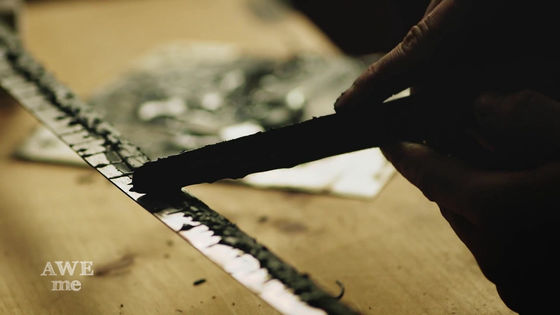
After moving the blade back and forth in a high temperature furnace of 800 degrees Celsius or higher to burn the blade ......
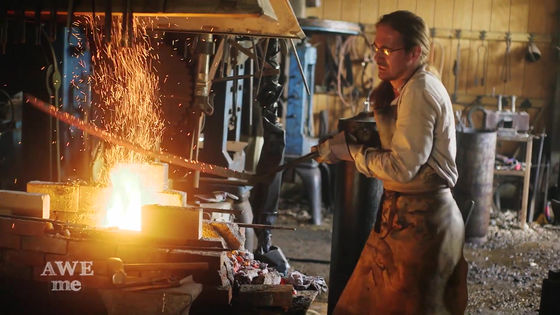
By soaking in water, the degree of warping of the blade is further increased.
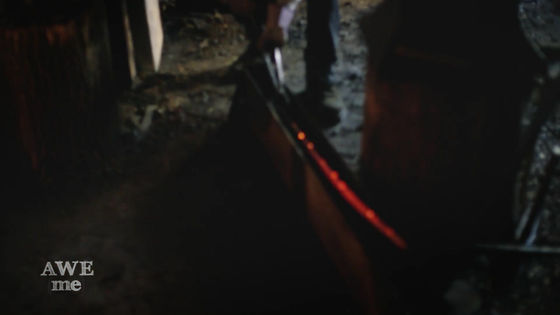
Juju
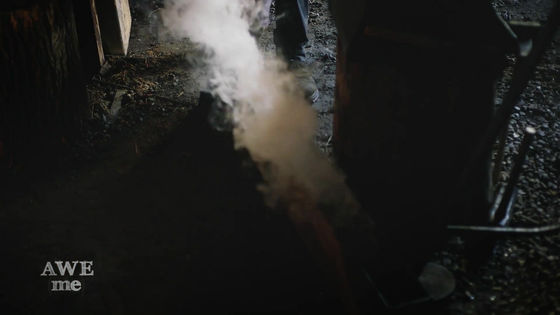
Where the blade is completed, we will make "eyes" to decorate on the handle of the sword.
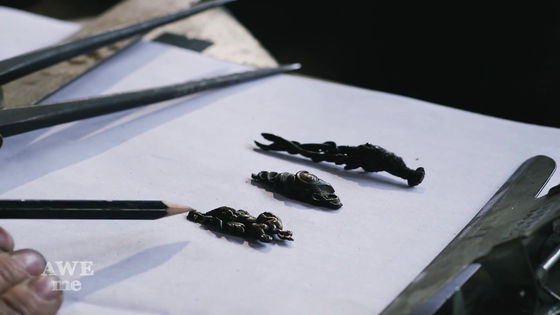
After painting a design picture of the eye ... ...
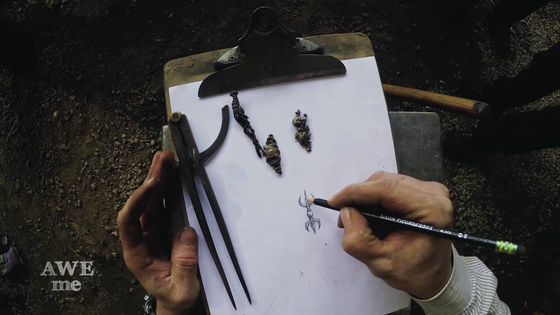
I will copy an illustration on a copper plate and hit a stinger.
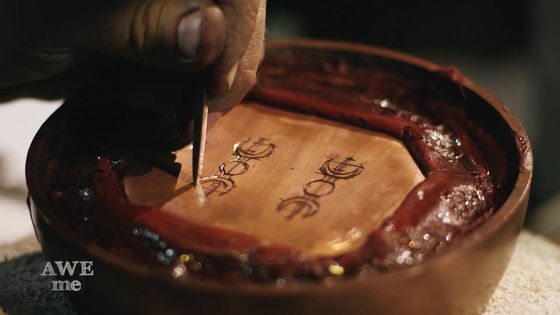
The surface is blown with a burner ......
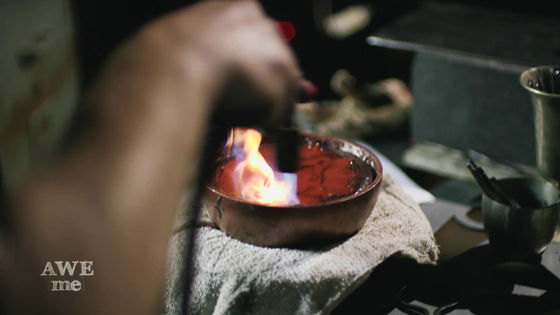
Immersed in chemicals to polish the surface is complete.
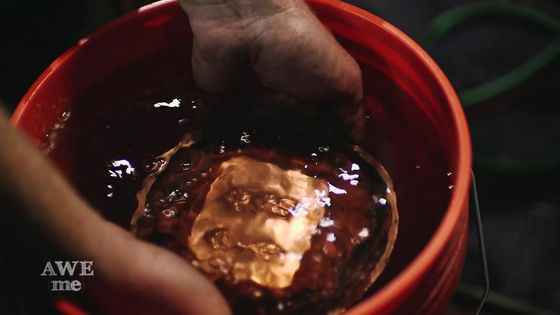
Next to the eyes, making a sword pattern. Align the blades with the wood and measure the size ......

I will make clearance to punch the surface and pull the sword.
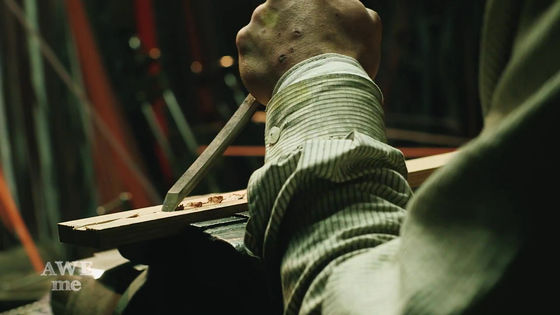
Then heat up the catch of copper ... ...

Add 6% gold to the amount of copper.
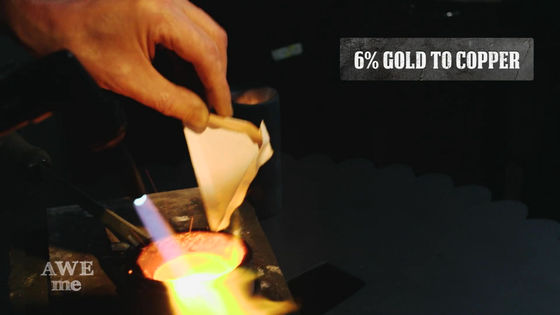
When this is cooled down, a plate of red copper is completed.
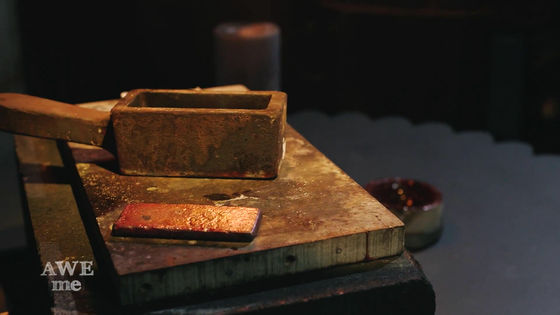
Hammer the red copper plate on the left until it looks like the right side plate and stretch it.
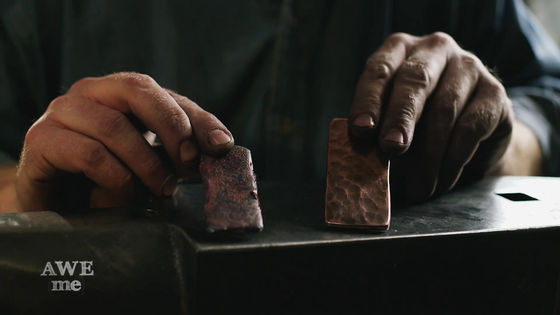
Extrude a plate of red copper with a press machine, and create a stem head.

The stalk head fulfills the role of the cover by attaching it to the tip of the handle.
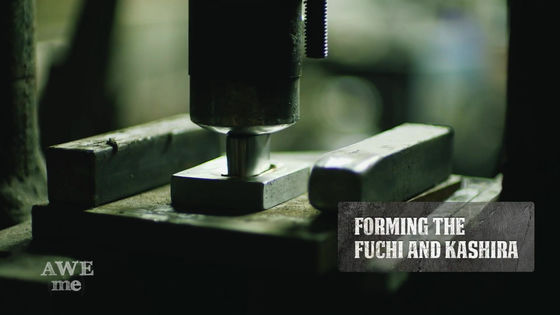
This is where I am making a pattern by scraping the inside of the collar.
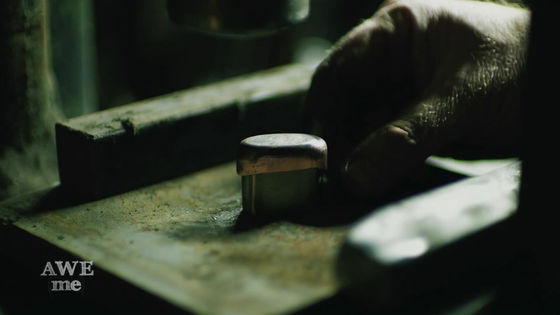
Finally we carve carvings at the base of the sword
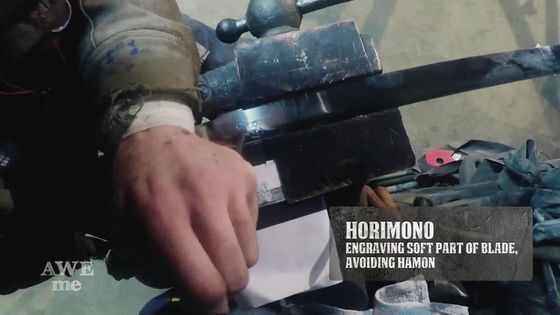
Attaching a flange and a handle to the blade ......
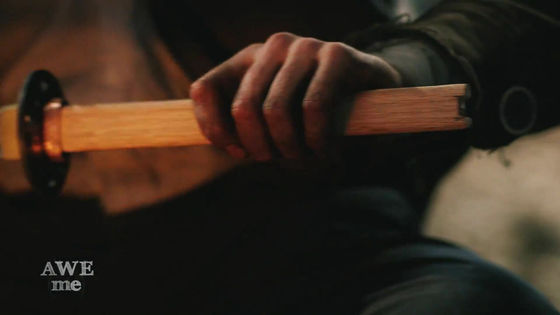
I will wind the stems around the surface of the handle.
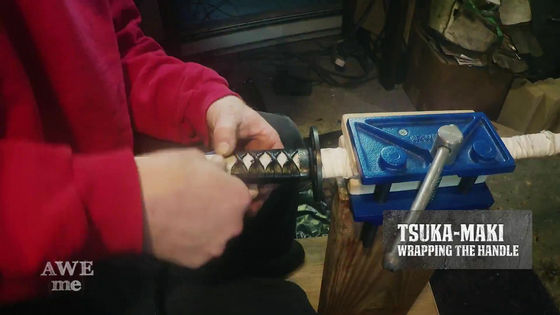
Then the Japanese sword is completed over a long time.
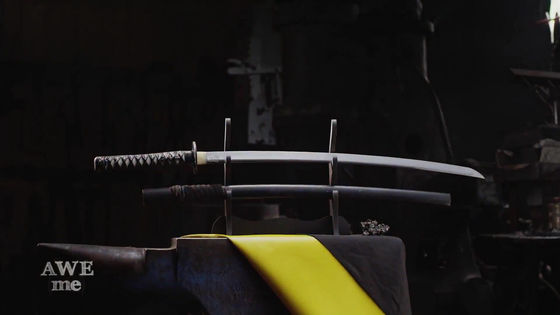
In the blade, the same shisa carvings as the Hanzo sword appearing in Kill Bill are drawn.
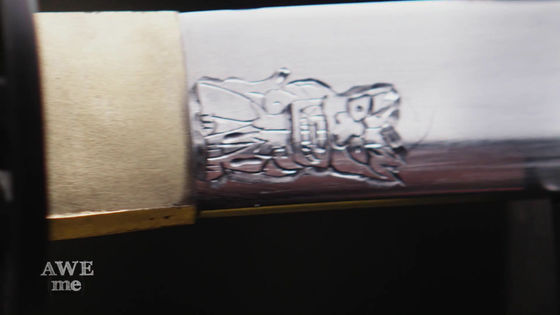
In order to ascertain the sharpness of the Hanzo sword, a craftworker who prepares rolled straw and holds a sword.
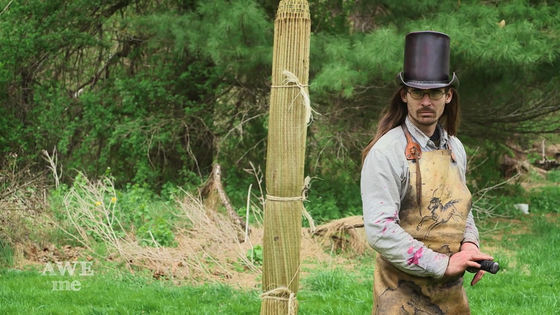
Sprinkle winding straw and cut in half.

While looking at the appearance of the Hanzo sword, it also reproduces a sharp sharpness.

Watermelon written "BILL" ......
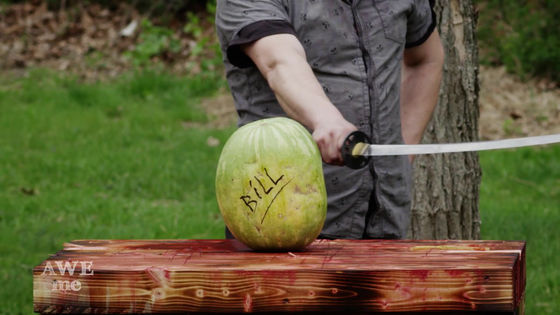
Spat and cut.
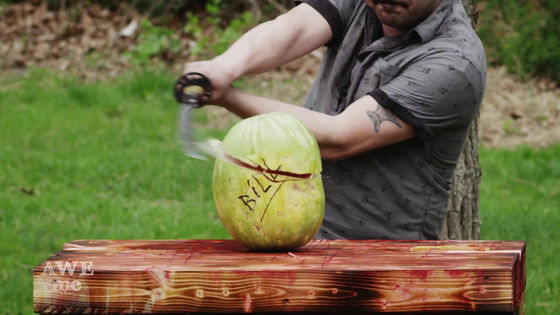
I have split it.

Satisfiable swordsmith looking sharply at the blade.
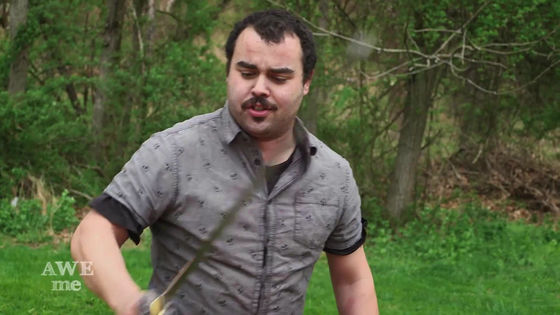
Since "MAN AT ARMS" creates swords and weapons by seeking hope from fans, there is much possibility of actually being produced if you tell the imaginary weapon you want to make.
Related Posts:







